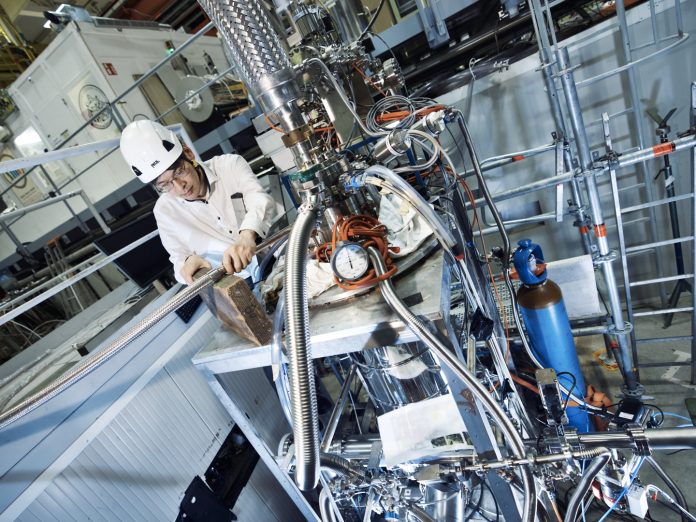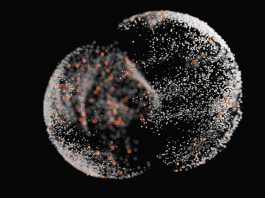A collaborative study conducted by CERN and ASACUSA has revealed that hybrid matter-antimatter atoms have an unexpected response to laser light when immersed in superfluid helium.
What has been discovered about the hybrid matter-antimatter atoms?
“Our study suggests that hybrid matter–antimatter helium atoms could be used beyond particle physics, in particular in condensed-matter physics and perhaps even in astrophysics experiments,” explained Masaki Hori, ASACUSA co-spokesperson. “We have arguably made the first step in using antiprotons to study condensed matter.”
The ASACUSA collaboration makes hybrid matter–antimatter helium atoms to determine the antiproton’s mass and compare it with that of the proton. These hybrid atoms contain an antiproton and an electron around the helium nucleus, instead of two electrons around a helium nucleus, and are made by mixing antiprotons produced at CERN’s antimatter factory with a helium gas that has a low atomic density and is kept at low temperature.
This study has been published in the journal Nature, on 17 March 2022.
What elements were crucial for the success of this study?
Low gas densities and temperatures hold an integral role in these antimatter studies, which involve measuring the response of the hybrid atoms to laser light in order to determine their light spectrum.
High gas densities and temperatures result in spectral lines, which is caused by transitions of the antiproton or electron between energy levels. These spectral lines are too broad to allow the mass of the antiproton, relative to that of the electron, to be determined.
These spectral lines were surprising to the ASACUSA researchers as, when they used liquid helium in this new study – which has a much higher density than gaseous helium – they saw a decrease in the width of the antiproton spectral lines.
Additionally, when they reduced the temperature of the liquid helium to values below the temperature at which the liquid becomes a superfluid— when it flows without any resistance—they found an abrupt additional narrowing of the spectral lines.
“This behaviour was unexpected,” observed Anna Sótér, principal PhD student working on the experiment, and now an assistant Professor at ETHZ. “The optical response of the hybrid helium atom in superfluid helium is starkly different to that of the same hybrid atom in high-density gaseous helium, as well as that of many normal atoms in liquids or superfluids.”
What do these results mean for future physics experiments?
The researchers believe that this surprising behaviour is linked to the radius of the electronic orbital, which is the distance at which the hybrid helium atom’s electron is located.
In contrast to that of many normal atoms, the radius of the hybrid atom’s electronic orbital changes very little when laser light is shone on the atom, and thus does not impact the spectral lines even when the atom is immersed in superfluid helium. However, further studies are needed to confirm this hypothesis.
The result has several ramifications. Firstly, researchers may create other hybrid helium atoms, such as pionic helium atoms, in superfluid helium utilising different antimatter and exotic particles, to study their response to laser light in detail and measure the particle masses.
Additionally, the substantial narrowing of the lines in superfluid helium implies that hybrid helium atoms could be used to study this form of matter and potentially other condensed-matter phases.
Conclusively, the narrow spectral lines could be utilised to search for cosmic antiprotons or antideuterons (a nucleus made of an antiproton and an antineutron) of particularly low velocity that hit the liquid or superfluid helium that is utilised to cool experiments in space or in high-altitude balloons. However, numerous technical challenges must be overcome before the method becomes complementary to existing techniques for searching for these forms of antimatter.
To keep up to date with our content, subscribe for updates on our digital publication and newsletter.









